- Analysis
- Politics
- Federal
- Australia votes
This was published 1 year ago
From battlers to basket weavers: a guide to Australia’s voter types
By Matt Wade
From battlers to basket weavers, Australian politics has produced a rich vocabulary to describe different voter groups. Some are simple tags, such as protest voter or undecided voter. Others draw on gender, social class, occupation, cultural traits and location.
As Australians cast their ballots on Saturday attention will finally switch from campaigning politicians to the nation’s diverse array of electors. These are some key types of voters likely to turn up at polling booths and feature in the post-election analysis.
Swinging Voters
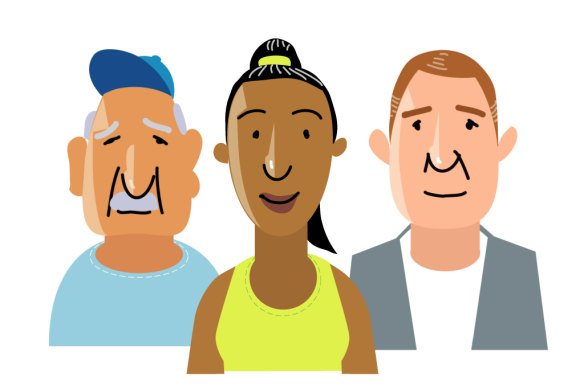
Some swinging voters feel they are making a more informed decision.Credit: Matt Davidson
Back in the mid-1960s more than 70 per cent of voters said they always cast a ballot for the same party. By the previous election that had fallen below 40 per cent, the lowest share on record. The upshot? More Australians consider themselves swinging voters than ever before.
The University of Sydney’s Dr Sarah Cameron, co-author of the Australian Election Study which has surveyed a large sample of voters after every election since 1987, says the electorate has become much less predictable over time.
“At the last election 37 per cent of voters said they made up their minds during the election campaign and 27 per cent of all voters decided in the final few days of the campaign, or on election day itself,” she says.
“We are also seeing record low levels of political partisanship and record low use of how to vote cards. All this leads to a more volatile electorate.”
Social researcher Rebecca Huntley says many voters like the idea of being a swinging voter.
“It seems like they are making an informed decision,” she says.
Even so, putting a precise figure on the share of genuine swing voters – those who actually switch their ballot between parties very regularly – is tricky.
John Black, a former Labor senator who is now executive chairman of demographic analysis firm Australian Development Strategies, estimates the proportion to be about one in four voters. “In some electorates, it’s only 5-10 per cent and those tend to be the more stable seats.”
Evidence from the Australian election study shows swinging voters are more likely to be influenced by party leadership than other voters.
Aspirationals
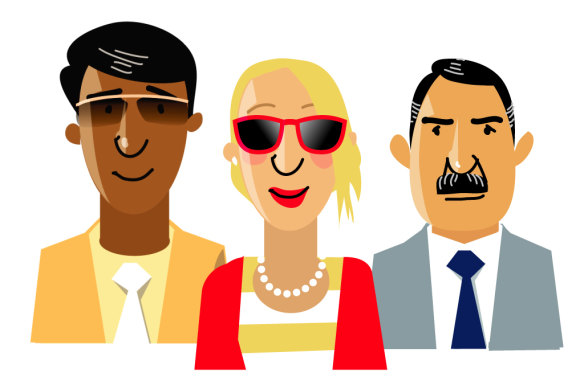
Aspirational voters tend to live in the suburbs, are paying off a mortgage and often have children in non-government schools.Credit: Matt Davidson
When Labor fell short at the previous election, despite being ahead in the polls for an extended period, many attributed the result to the ALP’s failure to appeal to aspirational voters. According to this line of argument, Prime Minister Scott Morrison’s message of ambitious individualism resonated with this group.
The aspirationals epithet, often linked to swinging voters, describes those who prioritise economic and social advancement for themselves and their families, over more abstract political causes such as fairness or social equity.
Black says they tend to live in the suburbs, are paying off a mortgage and often have children in non-government schools.
“They are people who want a better life for their kids than they had themselves, and are prepared to work hard to achieve it,” he says.
Some are sceptical about typecasting certain voters as aspirational. “Has there ever been a voter that doesn’t have aspirations?” asks Huntley.
But Labor leader Anthony Albanese has acknowledged the need for his party to appeal to voters who want to improve their own standing and that of their families.
“When I became Labor leader, I said that we’ve got to be interested in wealth creation as well as its distribution,” he told The Herald’s Deborah Snow last month.
“[In 2019] it appeared as though we were anti-aspirational, and one of the things that’s happened is that there are more middle-class people because of what Labor has achieved, more people going to uni because of Whitlam, more people set themselves up as small business people, because of Hawke and Keating. That’s a positive thing, lifting people up, that aspiration.”
Battlers
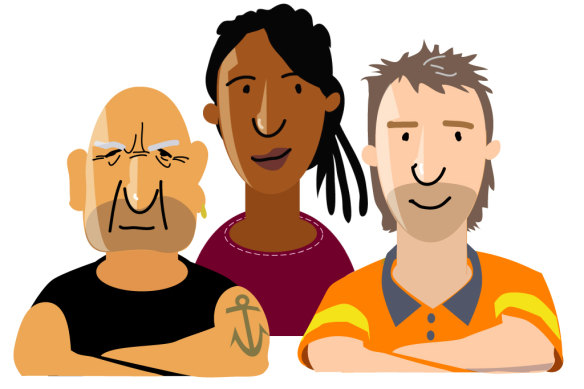
Howard’s Battlers were suspicious of high migration levels, worried about terrorism and often held socially conservative views.Credit: Matt Davidson
New voter categories often emerge when a distinctive social group appears to shift political allegiance. An example came in 1996 when the Liberal Party snatched a bag of outer suburban seats from Labor, giving rise to a new type of voter: Howard battlers.
It was an attempt to describe those won over by John Howard’s brand of politics despite having attributes often associated with Labor voters. Many Howard battlers had blue-collar jobs and, in some cases a relatively low income, but they were also suspicious of high migration levels, worried about terrorism and often held socially conservative views.
The Howard battler label picked up on the gradual erosion of Labor’s working-class base. In 1987 around 60 per cent of those who described themselves as working class voted Labor, but that had fallen to 41 per cent at the 2019 election (although the ALP still attracted more votes from that cohort than any other party).
During the past two decades, tradespeople, a group often linked to the battler tag, have emerged as an important constituency for the Coalition. In a nod to the Howard battlers, Tony Abbott coined the term “Tony’s tradies” to describe those who would benefit from generous small business tax breaks introduced when he was prime minister. Employment minister Stuart Robert recently claimed: “the Morrison government truly is the best friend that tradies have ever had”.
At the previous election those with non-tertiary qualifications, such as a trade, were more likely to vote for the Coalition (42 per cent) than Labor (32 per cent).
Suburban women
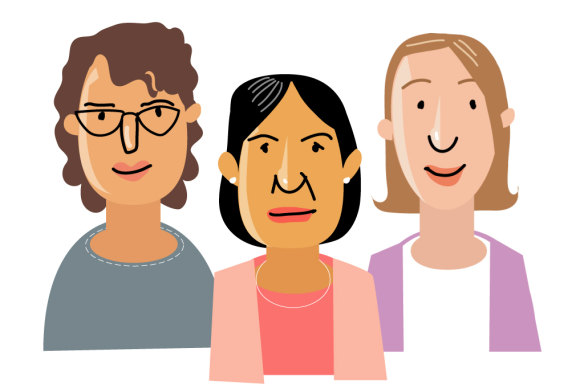
Political labels given to women rarely focus on their employment.Credit: Matt Davidson
Suburban women have been a political fixation for decades and voters within that amorphous social grouping have picked up a clutch of labels. In the late 1990s the “soccer mums” became a political preoccupation (in America they were renamed the “security mums” following the 9/11 terrorist attacks).
During the Howard government’s term, the tag “doctor’s wives” was often used to described female voters in wealthy, conservative electorates who were sympathetic to progressive causes, especially the treatment of refugees. But social and economic change has rendered that stereotype an anachronism.
“Those doctors’ wives have evolved into the teal candidates,” says Sydney University emeritus professor of political science, Rodney Tiffen.
Analysis by John Black shows that female professionals are now Australia’s largest occupational group and have outnumbered tradies since 2015.
“The female professional demographic has doubled in size in recent times,” he says.
And yet, Huntley points out the political labels given to women rarely focus on their employment.
“We don’t imagine women workers as a political force,” she says.
The Australian Election Study reveals a gradual shift in female voting patterns in recent decades.
In the 1990s Labor received slightly more support among men while the Coalition did slightly better among women. But Cameron says the gender gap in voting has reversed and widened over time.
“Over the last couple of elections men have been more likely than women to vote for the Coalition while women have been more likely than men to vote for parties on the left,” she says. “In 2019 the gender gap in voter behaviour reached its greatest point on record.”
Quiet Australians
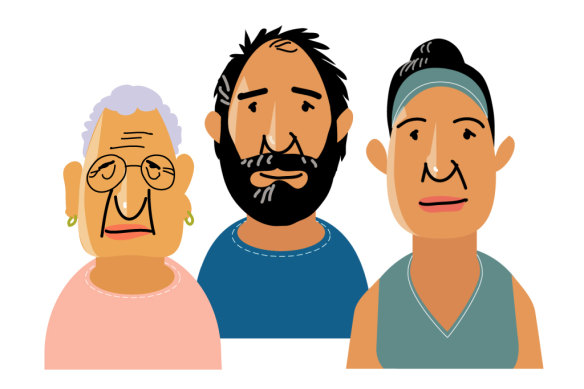
Scott Morrison has rebranded Menzies’ forgotten people as quiet Australians.Credit: Matt Davidson
Sometimes politicians come up with their own voter labels. In a landmark 1942 speech, Australia’s longest-serving prime minister, Robert Menzies, called Australia’s middle-classes the “forgotten people”. The notion of an unheard, underappreciated mass of voters has been a theme in Australian politics ever since.
Scott Morrison has drawn on this, rebranding Menzies’ forgotten people as “quiet Australians”. In his victory speech on election night in 2019, Morrison declared that group had “won a great victory”.
He later described quiet Australians as “free peoples, quietly going about their lives, going to work, running their businesses, raising their children, saving for their future, seeking to realise their aspirations, while always respecting the peace and freedom of others”.
The quiet Australians tag contrasts with another one of Morrison’s favourite political labels: the Canberra bubble, which describes insiders who are out of touch.
Tiffen says Morrison’s quiet Australians label echoes the famous appeal by former US President Richard Nixon for the support of America’s “great silent majority” amid huge anti-Vietnam war protests in 1969.
“It’s a way of saying vocal opinion is not majority opinion and even though all my opponents are up there making a noise I know people who are silent are on my side,” he says. “So it’s a nice tactical grouping.”
Urban progressives
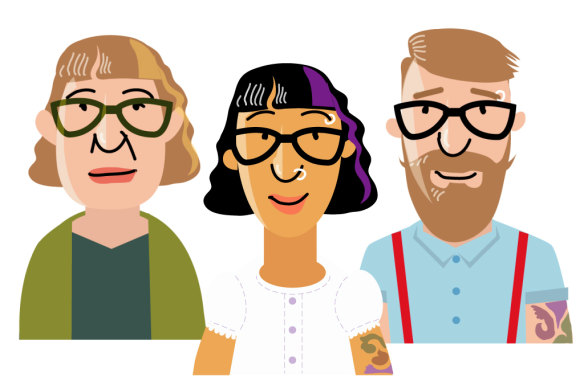
Former prime minister Paul Keating derided left-wing opponents of his reforms as “Balmain basket weavers”.Credit: Matt Davidson
Left-leaning inner-city voters have attracted a colourful array of nicknames, many of them disparaging. They typically focus on behaviours such as latte-sipping, chardonnay-swilling (at wine bars) or bicycle riding. Sometimes they include apparel such as black skivvies.
Perhaps the most memorable barb in this genre came when Paul Keating derided left-wing opponents of his reforms as “Balmain basket weavers”.
But the political labels given to urban progressives show how voter stereotypes can be misleading. When The Australia Institute surveyed a representative sample of voters in 2019 it found cafe latte drinkers vote Liberal/National more than any other party. Among regular latte drinkers, voting intentions were 34 per cent Liberal/National, 32 per cent Labor, 16 per cent Greens, 7 per cent One Nation and 12 per cent other (although the biggest share of soy latte drinkers vote Green). The survey found occasional chardonnay drinkers were also most likely to be conservative voters (Liberal/National 23 per cent, ALP 20 per cent, Green 18 per cent and One Nation 14 per cent).
The institute concluded: “It’s not clear why political rhetoric of division has focused so much on what people drink, but this research shows it bears little relationship to what really happens in Australia’s cafes, pubs and bars.”
The 2017 Political Persona Project which identified seven distinctive “political tribes” in Australia described one of the groupings as progressive cosmopolitans. That cohort, made up largely of urban voters who were left-leaning and politically engaged, accounted for just over 18 per cent of the population.
Cut through the noise of the federal election campaign with news, views and expert analysis from Jacqueline Maley. Sign up to our Australia Votes 2022 newsletter here.